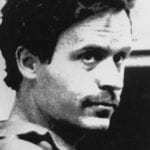 Creepy
Creepy  Creepy
Creepy  Movies and TV
Movies and TV 10 Movies That Get Elite Jobs Right, According to Experts
 Weird Stuff
Weird Stuff 10 Times Real Laws Were Based on Bizarre Hypotheticals
 Animals
Animals 10 Inspiring Tales of Horses Being Human
 Mysteries
Mysteries Top 10 Haunting Facts About the Ghost Ship MV Alta
 History
History 10 Surprising Stories About the Texas Rangers
 Humans
Humans 10 Philosophers Who Were Driven Mad by Their Own Theories
 Miscellaneous
Miscellaneous 10 Video-Game-Worthy Weapons and Armors from History
 Weird Stuff
Weird Stuff 10 Psychics Who Accurately Predicted Wartime Events
 The Arts
The Arts 10 Pieces of Art Inspired by a Broken Heart
 Creepy
Creepy 10 Death Superstitions That Will Give You the Creeps
 Movies and TV
Movies and TV 10 Movies That Get Elite Jobs Right, According to Experts
 Weird Stuff
Weird Stuff 10 Times Real Laws Were Based on Bizarre Hypotheticals
Who's Behind Listverse?

Jamie Frater
Head Editor
Jamie founded Listverse due to an insatiable desire to share fascinating, obscure, and bizarre facts. He has been a guest speaker on numerous national radio and television stations and is a five time published author.
More About Us Animals
Animals 10 Inspiring Tales of Horses Being Human
 Mysteries
Mysteries Top 10 Haunting Facts About the Ghost Ship MV Alta
 History
History 10 Surprising Stories About the Texas Rangers
 Humans
Humans 10 Philosophers Who Were Driven Mad by Their Own Theories
 Miscellaneous
Miscellaneous 10 Video-Game-Worthy Weapons and Armors from History
 Weird Stuff
Weird Stuff 10 Psychics Who Accurately Predicted Wartime Events
 The Arts
The Arts 10 Pieces of Art Inspired by a Broken Heart
10 People Who Merciless Killers Let Go Free
No one is entirely certain why serial killers do what they do. It’s a question that sticks with us and keeps us coming back to articles just like this one. Serial killers commit atrocities that boggle the mind over and over again, straying from the normal societal plan so drastically that we’re all left scratching our heads even after they confess everything. If you ask such murderers, the answer tends to be that they just really enjoy killing.[1] While that answer only brings up more questions, there is one thing that serial killers do that is even more baffling.
Sometimes, they let someone go. Every so often, a serial killer manages to capture a victim and has them exactly where he wants them, only to walk away. Maybe the killer just wasn’t feeling it that day, or letting the prey go was its own kind of twisted power trip. Perhaps even serial killers have moments of humanity where slaughtering a fellow human being seems as repugnant as it does to the rest of us. In most cases, we will never know why a serial killer lets one particular victim go free.
10 Jeffrey Rignall
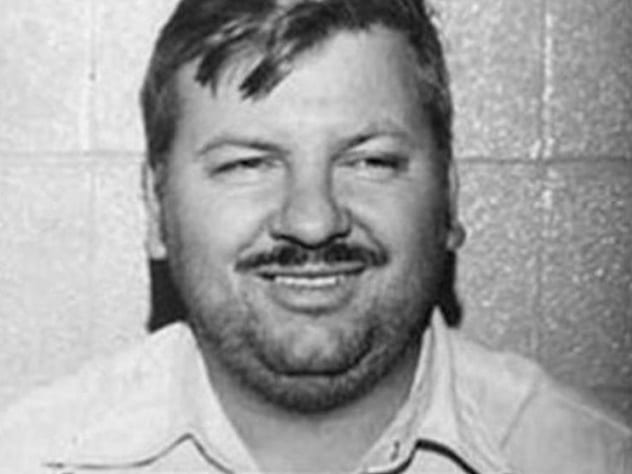
In March 1977, Jeffrey Rignall accepted a ride and an offer of marijuana from John Wayne Gacy, only to be chloroformed as soon as he got into the vehicle. Letting a victim or two go free wasn’t out of the ordinary for Gacy, who seemed to enjoy torture far more than murder. Not that he never killed. Far from it. He killed at least 33 young men and stashed them under his floorboards before he was caught on December 21, 1978. Gacy loved to play dress-up games with a nightmarish clown costume and fake policeman’s clothes. He learned to do tricks for his guests, like trapping kids in handcuffs by offering to show them the secret to escaping them. The secret, it turned out, was to have the key.
Rignall awoke handcuffed in what he assumed was Gacy’s home. He was sexually assaulted by Gacy and an unknown accomplice. Unlike many boys who ended up in the killer clown’s handcuffs, Rignall was left alive under a statue in Chicago’s Lincoln Park. No one knows why, but many suspect that Gacy thought he could get away with leaving victims alive on occasion. Most would be too afraid to be outed as gay in the 1970s. Not so for Rignall, who staked out the highway exit where he was picked up and followed his attacker home.[2] He reported his ordeal to the police, but it would be months before an arrest was made.
9 Kelly Garrett
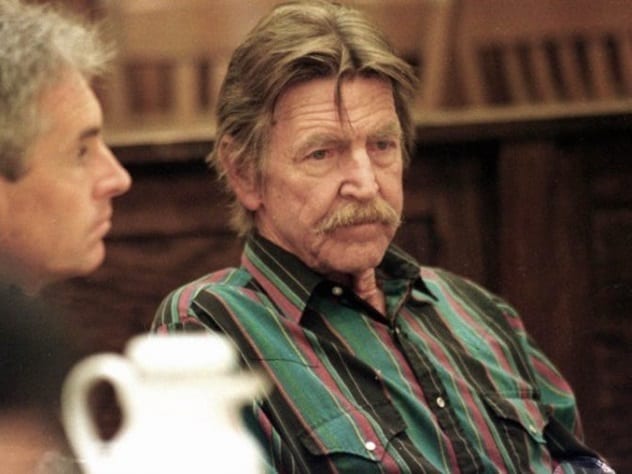
When Kelly Garrett reported her ordeal at the hands of David Parker Ray in 1996, no one believed her. Local police thought that her tale of a man with a trailer-turned-torture chamber was too fantastical to be true, and her husband thought that she was covering up a drug binge or infidelity with the story.
It was all true, though. Ray would become known as the “Toy Box Killer” for his custom torture chamber. Victims would wake up strapped to a gynecologist’s chair, and an automated recording would explain the horrific treatment that they could expect. Ray never hesitated to mutilate or kill his victims for resisting, but he was known to disorient his more obedient victims with drugs and mind control techniques before letting them go.
That is exactly what happened to Garrett, whose memory of her stay in the twisted toy box was hazy until police found her again in 1999.[3] Cynthia Vigil, another of Ray’s victims, had managed to escape the toy box when her torturer left the keys on the table by mistake. When she escaped, police were forced to take her seriously. She was injured and wore nothing but an iron collar and chains. When police arrested Ray and looked through his things, they found videos of various women being tortured. The search for these women led them back to Garrett.
8 Elmer Wayne Henley And Rhonda Williams

On August 8, 1973, Elmer Wayne Henley joined 15-year-old Rhonda Williams for a bike ride that would change both their lives.[4] Neither teen had much to go home to, but they supported one another as best they could. When Williams got a flat tire, Henley’s older friend, Dean Corll, begrudgingly gave the two a ride back to his home. He didn’t care for girls at all, so Williams was a major nuisance to him. When they arrived, they met Tim Kerley, another area teen that Corll had brought home. The three teens stayed up drinking and smoking marijuana into the night while Corll turned in early.
Williams woke up to a kick in the side and someone shouting at her. She first thought it was her abusive father but soon realized that it was Corll. She also soon realized that she was chained to a board alongside Henley and Kerley. Corll intended to rape and murder Kerley, but he wanted Henley to do the same to Williams to ensure that she told no one.
Although Henley would later admit to being extremely conflicted, Williams would insist that she never felt she was in danger. Henley had told her that she would make it out of this alive, and she trusted him. Ultimately, she was right. Henley ran into the other room and fatally shot Corll. When police arrived, it exposed the horrific operation that Corll had been running with the help of Henley and his friend, David Brooks.
Both boys struggled to fit in as kids, and Corll ingratiated himself to neighborhood boys by giving them samples from his family’s candy company. By the time Brooks witnessed Corll molesting two boys, he already idolized him too much to say anything. Henley believed that he was meant to be Corll’s next victim, but they got along so well that he was instead given a job to do. For each boy that Henley delivered to the serial killer, he was paid $200. The ensuing slaughter of teenage boys would be known as the Houston Mass Murders.
7 Lisa McVey
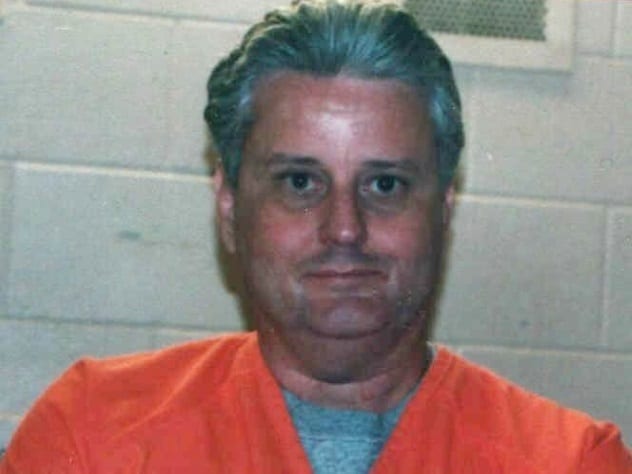
Seventeen-year-old Lisa McVey was snatched from her bike on November 3, 1984, by Bobby Joe Long. She was held at gunpoint, blindfolded, taken to Long’s home, and raped several times over the course of the next 26 hours. McVey would later recall that she prayed that he wouldn’t kill her.[5]
She had good reason to fear. During the mid-1980s, Long terrorized Tampa, Florida. His first murder happened earlier in 1984, when he picked up a young sex worker named Artis (or Artiss) Wick. It was committed on a whim, but Long had harbored a hatred for women since childhood, when he watched his mother flirt and bring home strange men every night. He might have been fine, though, if not for a head injury sustained during a motorcycle accident. After that, his ex-wife reported that he became violent and sex-obsessed. She divorced him as he degenerated into a rapist and murderer responsible for at least 50 rapes and ten murders.
McVey pulled from her own abusive childhood and various detective shows to trick Long. She told him that it was unfortunate how they had met because she would like to be his girlfriend. It worked like a charm, but McVey didn’t stop there. She peeked under her blindfold when he wasn’t looking to get a glimpse of his car and plates, counted the stairs leading up to the house, and left her fingerprints on every surface she could touch. When she soothed him, she touched his face so that she could memorize it. McVey wanted to escape and live, but she also wanted him caught. This wouldn’t be the last time that she put a dangerous man behind bars, either. She went on to become a sheriff’s deputy in the same area she was snatched from decades ago.
6 Rose Steward
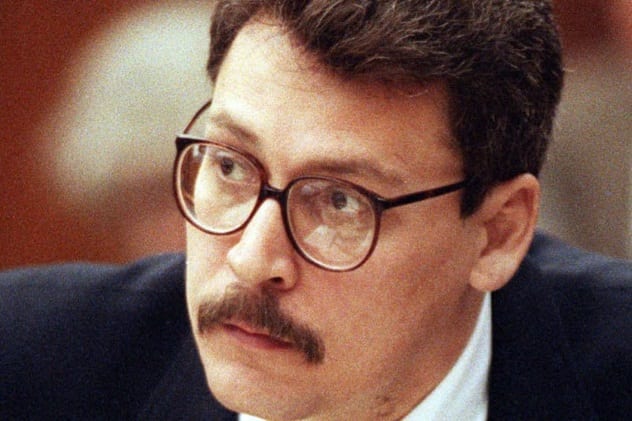
Rose Steward woke up suddenly on the night of March 29, 1984, to an intruder holding a knife to her neck.[6] Much like Lisa McVey, Steward pretended to like her attacker during her five-hour ordeal. She realized early on that the intruder, Dean Phillip Carter, fed on her fear, so she resolved to show none. When he hurt her, she chastised him lightly and cheerfully like a kindergarten teacher might. She convinced him to untie her by insisting that she wanted to hold and kiss him.
Ultimately, Carter left her alive but went on to later murder at least four other women. Susan Knoll, Jillette Mills, Bonnie Guthrie, and Janette Cullins were slain during a three-week rampage that spanned almost the whole California coastline. Steward’s nightmare wouldn’t end until she saw him behind bars for what he had done to her. She slept in her living room with a loaded gun beside her for weeks afterward and dedicated the next seven years to making sure he never saw freedom again.
She succeeded, and Carter currently sits in San Quentin on California’s death row. He is now best known for his website, Dead Man Talkin’, where he denies committing any crimes and derides the justice system for the existence of death row. His distaste for the death penalty makes sense, considering that it directly affects him. What surprises many is that Steward publicly agrees. She doesn’t approve of the death penalty, even if she would like to see Carter suffer.
5 Felicity Nightingale
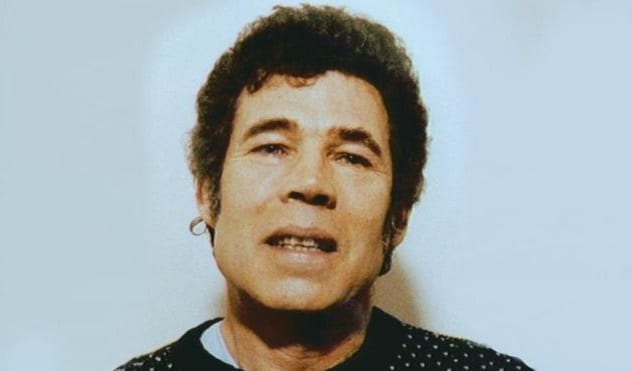
It was April 1980 when Felicity Nightingale was hitchhiking just outside of Gloucester.[7] At 22 years old, she sorted the men who gave her rides into one of two categories. They were either fatherly types who bought her tea and cautioned her or creeps who made dirty jokes the whole way. Regardless, she thought of hitchhiking as a challenging adventure and regarded it as a better option than the shoddy public transport. She had been dropped off at a gas station by a fatherly man when she was offered a lift from a stranger with a blue van.
The stranger started off strange and only got stranger as she spoke to him. He insisted that she throw her things in the back of his van and became aggressive when she refused. Next, he made her go have tea with him, where he berated her for her decision to hitchhike. Then, he tried to talk her into going back to his home by saying she would never make it to hers before nightfall. Finally, he changed his mind. He needed to see a friend in town, and she would just have to wait on the side of the road for him to return. Before he could, Nightingale flagged down a different driver and went home.
She had a bad feeling about the driver of the blue van, but her suspicions weren’t confirmed until she saw his mugshot on the news in 1994. The driver had been Fred West, one of the most notorious and prolific serial killers in recent UK memory. With the help of his wife, Rose, West killed at least 12 young women, though most suspect that he committed many more murders. Had Nightingale been there when West came back around, she almost certainly would have been killed. Nightingale often jokes that she was the only woman ever turned down by Fred West.
4 Margaret Mayfield Palm
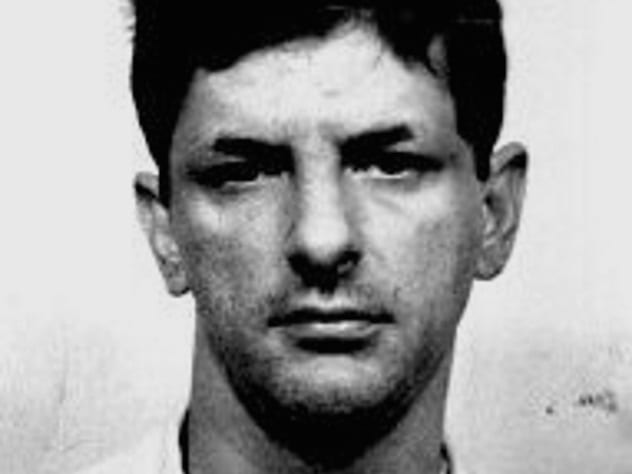
Margaret Mayfield Palm was shopping in a San Antonio store in 1981 when she was suddenly held at gunpoint by Stephen Morin, a drifter on a five-week killing spree across the Southwest that left a number of women dead. As he climbed into Palm’s vehicle and ordered her to drive, he explained that he had killed a local woman the previous night and had just escaped a police raid by going through his motel room window. He would not hesitate to kill her. Terrified, Palm began to pray.
Morin did not shoot her. Instead, he broke down and told Palm about his life through sobs. He had been a drifter and an IV drug user for a long time, making his living by charming women or stealing. Often, the latter led to murder.
Palm told him that it was no accident that he was there with her in that moment and that he could still ask forgiveness for his crimes. The two ended up driving around for eight to ten hours as she read to him from her prayer book and played evangelical tapes for him. Before he left, he gave her all of the bullets from his gun. Morin intended to head to Fort Worth, where he would turn himself in to an evangelical leader, but was captured by police at the bus stop.[8]
3 Sandy Fawkes
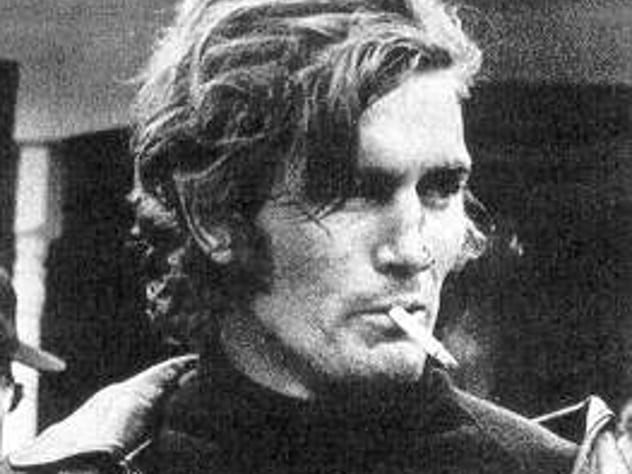
British journalist Sandy Fawkes had no way of knowing that the man she met in an Atlanta Holiday Inn bar was America’s oddest serial killer, Paul John Knowles.[9] He was responsible for at least 20 murders of victims who fit no consistent profile across Ohio, Texas, Connecticut, Nevada, Virginia, and Georgia. Knowles introduced himself as Lester Daryl Golden while wearing a suit stolen off a victim and insisted that he would be a great subject for her next book. He boasted that he would be dead inside of a year, but he would be famous. Fawkes humored him for a few days as they rode around in a stolen white Chevy Impala.
The two parted ways amicably, but Knowles was right about his fame and death. When caught by police, he blabbed openly about his crimes before being shot while trying to escape the back of a cop car with a paperclip. It turned out that his motive was to become a famous serial killer. Fawkes realized that the only reason she had been left alive was because of her position as a journalist. She did, of course, write about her terrifying-in-hindsight encounter with a vicious killer in a 1977 book titled Killing Time.
2 Carl Stotter
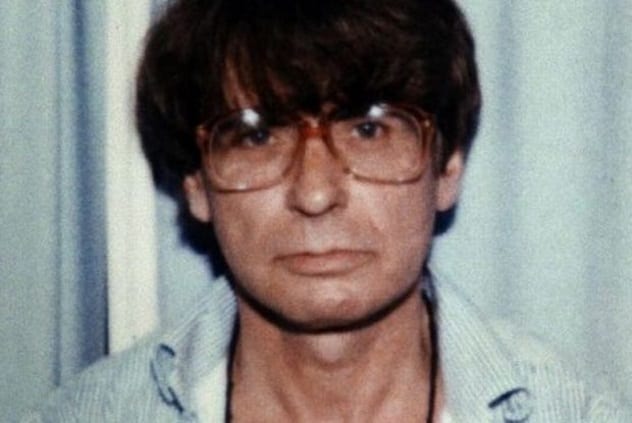
In 1982, Carl Stotter, a 21-year-old drag artist, visited the Black Cap pub in Camden, England, to drown his sorrows over his latest failed relationship. After he’d had a few drinks, he was approached by a tall man offering to buy him another. Just a few hours later, he awoke from a drunken haze to find that he was unable to breathe. A man leaned over him, and at first, Stotter thought that the man was trying to help him somehow. He soon realized that this was not true when the stranger dunked him into a bathtub and held his head underwater. No matter how much he begged during his gasps for air, the man would not stop. Stotter soon ceased to struggle.[10]
The man from the pub happened to be Dennis Nilsen, a serial killer who murdered at least 15 young men. He targeted gay men who were homeless or students so that people would be less likely to come asking after them, and his favorite methods were drowning and strangulation. Nilsen was also a necrophiliac who preferred his victims dead and dismembered. When Stotter stopped moving, Nilsen dragged him to the couch. As he prepared for the evening, his dog, Bleep, hopped up on the couch and began to lick at Stotter’s face.
Nilsen froze. His victim was still alive. In that moment, he had a choice to make: Finish the job or try to revive the half-dead man on his couch. Astonishingly, Nilsen took the second choice. He pulled Stotter into his bed and warmed him with his own body heat. When Stotter awoke, Nilsen convinced him that he had imagined the whole ordeal in his drunken state. Believing that he’d just had a bad dream, Stotter even agreed to meet up with Nilsen again later. Although he didn’t keep that appointment, he also didn’t report Nilsen to the police.
1 Jay Roberts

Jay Roberts was as tough as US infantrymen come. He worked in a unit of the Marines often referred to as “The Walking Dead” in 1980, when he was approached by one of America’s most prolific serial killers, Randy Kraft.[11] Kraft started up a conversation about books, current events, and travel with Roberts in a parking lot next to San Clemente beach. A handsome, tall Marine, Roberts was exactly Kraft’s type. Roberts was pretty sure he’d just become friends with the warm and engaging man, so he thought nothing of it when Kraft invited him back to his motel for a good beer.
Randy Kraft was a perfect psychopath. He used his charisma and drugs to lure unsuspecting gay men someplace private so that he could kill and mutilate them, though not necessarily in that order. He was convicted of 16 murders, but authorities suspect him of having committed more than 50. No one can be certain, since Kraft has remained stubbornly silent about his crimes.
It wasn’t until Kraft turned to Roberts to ask him what he thought about gay sex that the light bulb went off. Kraft kept talking, insisting that lots of Marines liked gay sex. Roberts, who knew nothing about gay men and was quickly becoming uncomfortable, responded that soliciting sex from a Marine sounded like a great way to earn a “right proper ass-kicking.” Kraft responded slyly that he just had to get one away from his friends. Roberts left soon after, feeling like he may have led Kraft on. It would be decades before he saw the man on the news as a convicted serial killer.
Renee Chandler is an Atlanta-based graphic designer and writer.
Read about more people who survived a run-in with a serial killer on 10 Grueling Experiences Of People Who Escaped Serial Killers and 10 People Who Survived Vicious Serial Killers.

